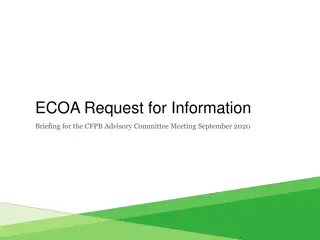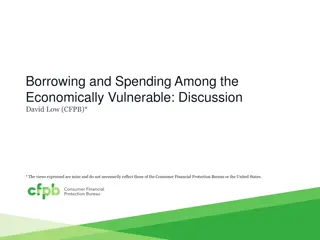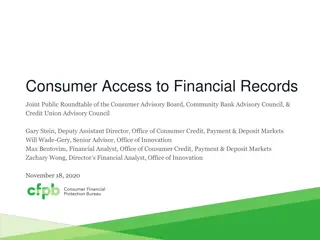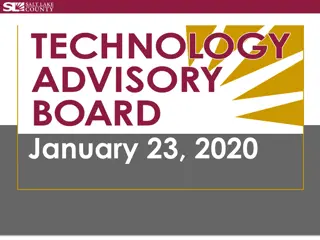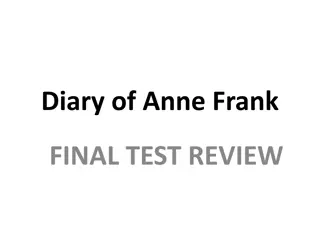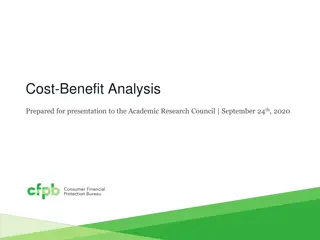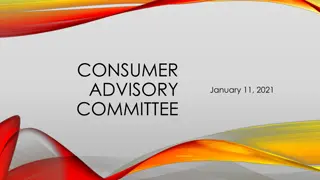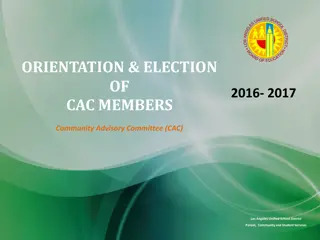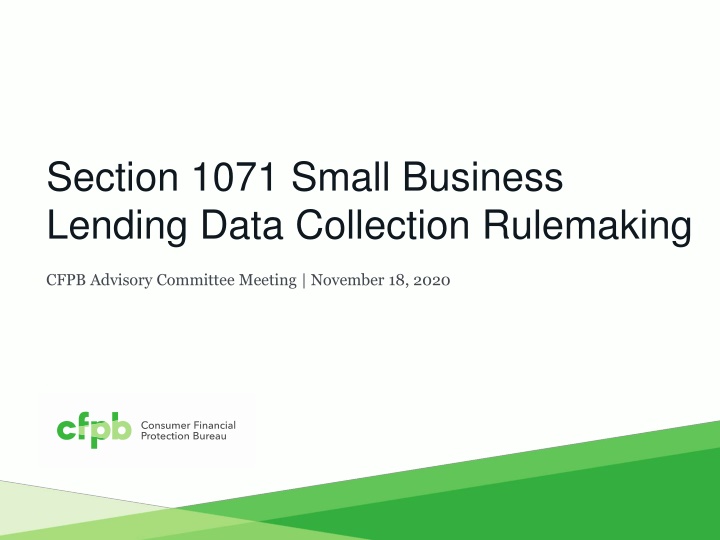
Insights into Section 1071 Small Business Lending Data Collection Rulemaking
Discover the impact of Section 1071 of the Dodd-Frank Act on small business lending, including data collection requirements for women-owned, minority-owned, and small businesses. Learn about the statutory purpose, market estimates, data points, and reporting requirements outlined by the CFPB Advisory Committee.
Download Presentation

Please find below an Image/Link to download the presentation.
The content on the website is provided AS IS for your information and personal use only. It may not be sold, licensed, or shared on other websites without obtaining consent from the author. If you encounter any issues during the download, it is possible that the publisher has removed the file from their server.
You are allowed to download the files provided on this website for personal or commercial use, subject to the condition that they are used lawfully. All files are the property of their respective owners.
The content on the website is provided AS IS for your information and personal use only. It may not be sold, licensed, or shared on other websites without obtaining consent from the author.
E N D
Presentation Transcript
Section 1071 Small Business Lending Data Collection Rulemaking CFPB Advisory Committee Meeting | November 18, 2020
Background Section 1071 of the Dodd-Frank Act amended the Equal Credit Opportunity Act (ECOA) to require financial institutions to compile, report, and maintain data regarding applications for credit for women- owned, minority-owned, and small businesses. 15 USC 1691c-2(b). ECOA defines credit as the right granted by a creditor to a debtor to defer payment of debt or to incur debts and defer its payment or to purchase property or services and defer payment therefor. 15 USC 1691a(d); see also 12 CFR 1002.2(j). Section 1071 is similar to HMDA for mortgage lending, but small business lending is more varied in both products and underwriting approaches. 2
Small business lending market estimates Term Loans & Lines of Credit 36% SBA Loans (7(a), 504, and microloans) 7% A $1.4 trillion market Merchant Cash Advance <1% Business Credit Cards 16% Factoring 7% Equipment Leasing 13% Supplier Financing 21% Source: CFPB, Key dimensions of the small business lending landscape (May 2017) 3
Section 1071s statutory purpose [F]acilitate enforcement of fair lending laws and [E]nable communities, governmental entities, and creditors to identify business and community development needs and opportunities of women-owned, minority-owned, and small businesses 4
Data collection and reporting requirement Covers applications for credit for: Women-owned businesses Minority-owned businesses Small businesses The Bureau will prescribe such rules and issue such guidance as may be necessary to carry out, enforce, and compile data pursuant to this section. 5
Statutory data points Action taken by the institution and date of such action Application number and date received Gross annual revenue in last fiscal year Type and purpose of the loan or credit Principal place of business (census tract) Race, sex and ethnicity of the principal owners Amount of credit transaction or credit limit approved Amount of credit or credit limit applied for Also provides for any additional data elements that the Bureau determines would aid in fulfilling the purposes of [section 1071]. 6
Proposals under consideration Scope of the rulemaking Covered lenders definition of financial institution Covered applicants definitions of small business, women-owned business, minority-owned business, and minority individual Covered products definition of credit Definition of application Data points (mandatory and discretionary) Shielding data from underwriters and other persons (firewall) Applicants right to refuse to provide certain information Compiling, maintaining, and reporting 1071 data to the Bureau Privacy considerations involving Bureau publication of 1071 data Implementation period 7
Section 1071 key considerations Provide more informative and inclusive small business lending data than currently available and in furtherance of 1071 statutory purposes. Minimize the burden from implementation and ongoing collection (avoid reducing credit availability). Prioritize simplicity in explanations and in rulemaking. Consider areas with the potential for consumer harm (less harm in practice, less need to capture). Minimize unintended consequences. 8
Rulemaking roadmapcompleted milestones Milestone White paper Date completed May 2017 Notes Key dimensions of the small business lending landscape Held in Los Angeles Field hearing Request for Information Symposium on section 1071 Data point May 2017 May 2017 November 2019 Two panels/11 thought leaders Small Business Lending and the Great Recession 100+ meetings over multiple years January 2020 Outreach to stakeholders Ongoing 9
Rulemaking schedule, per California Reinvestment Coalition v. Kraninger Consistent with the its commitment to completing the 1071 rulemaking, the Bureau has agreed to: Release SBREFA outline by September 15, 2020. Convene SBREFA panel by October 15, 2020. After SBREFA panel report is complete, negotiate with Plaintiffs to establish a deadline for issuing the NPRM. After the end of the NPRM s comment period, negotiate with Plaintiffs to establish a deadline for issuing the final rule. 10
Rulemaking roadmapcompleted milestones (cont.) Milestone One-time implementation cost survey SBREFA outline released SBREFA panel convened Date completed Summer/Fall 2020 Notes Response period ended October 16, 2020 September 15, 2020 October 15, 2020 The panel (comprised of the Bureau, SBA s Office of Advocacy, and OMB s OIRA) completed its meetings with small entity representatives in October. 11
Rulemaking roadmapfuture milestones Milestone Written feedback due from SERs on the SBREFA Outline Written feedback due from other stakeholders on the SBREFA Outline Complete SBREFA panel report Notice of proposed rulemaking Final rule Effective date Timing November 9, 2020 December 14, 2020 December 2020 TBD TBD TBD 12

